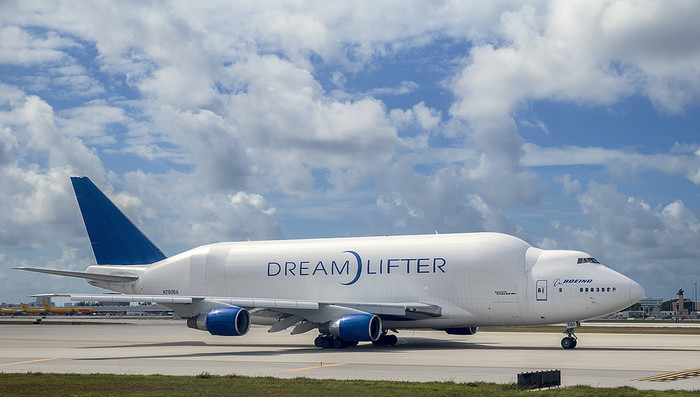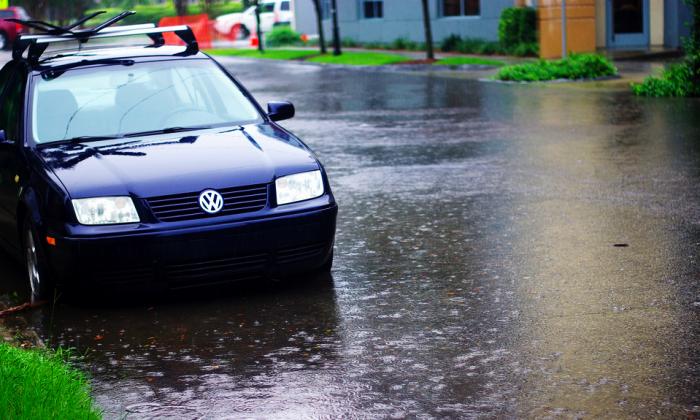
“The Noisette project at the old navy yard is dead.” – Ron Brinson in letter to the Post and Courier 1/2/2011
“…the failed Noisette real estate development…” – Joe Taylor in SC Department of Commerce Press Release 12/22/10
The Navy Yard at Noisette is a child of the Noisette Master Plan that began in 2001. Ten years later, there is some confusion as to the success and future of the plan(s).
Noisette has received numerous national awards and accolades over the years yet the local perception in the Charleston region is misguided. Too often the words failed, failure, or dead precede the word Noisette and that is a shame. A shame because they are wrong and a shame because this “failed” perception is a desired label by many that do not call the area home nor do they come to educate themselves before speaking in this manner.
One thing is clear, if you truly understood the master plan and took a ride thru the community today and compared it to where the area was 10 years ago, you would see why the term “failed” when used to describe the Noisette area is completely inappropriate. This determination between success and failure is in the eye of the beholder but I know there are many that take offense to an outsider calling it a failure. Noisette is more then the Navy Yard development alone. In fact, the Navy Yard is just one piece of a larger vision and plan, a plan that in a relatively short amount of time has garnered national attention, praise, and accomplishment.
The revitalization of the Noisette community required a different approach and the Noisette Company was the only company willing to take the challenge as well as the risk. Today, because of the vision and the plan, other developers, companies, residents, and the even the Charleston County School District have joined in to invest in the sustainable revitalization of the community.
“A Community of Lasting Value (from the master planning process 2001)
Noisette redevelopment combines the efforts of the Noisette Company, as well as City Planners, local residents, business owners, builders and craftspeople. The approved master plan outlines work that will take decades to complete. The ultimate goal will be realized when Noisette is established as a new urban center for North Charleston and the Lowcountry – a center that celebrates its history and natural environment, and a community enjoyed by a diverse citizenry who find it adds new value to their lives.”
If you still desire to measure the success of Noisette as compared to any other developer, you must at the very least, revisit the goals and timelines set forth by the original plan. Without even considering that modifications to any plan change over time, in particular, development plans adjusting to difficult economic times, you can measure the Noisette project a success on multiple levels. It’s important to point out that from the beginning, the vision and plan was to take decades to bare fruit. Perhaps the scale of progress and the speed at which progress has occurred does not satisfy those that use the word failure.
There is a misperception that because the master planning process began in 2001, that is how long the Navy Yard project has been undergoing redevelopment. Let’s clear that up. The first years were committed to public engagement and involvement. All stakeholders were invited to participate in the planning process. Navy Yard property was acquired by Noisette in phases beginning in the second half of 2003 and ending with the final transfer of land in 2006. For a redevelopment project of this size, scope and importance, things did not and could not be rushed. Environmental clean up, infrastructure planning and engineering were taking place behind the scenes. This process takes years before new construction can take place. It is during this time that several factors were at play:
- We entered the worst economic recession since the 1930’s. Financing dried up for everything from small subdivisions to large urban developments.
- It is apparent that behind the scenes, State government forces were at play, made apparent in 2008 by the release of their State Rail Plan placing an intermodal train yard in the center of the Navy Yard project. State officials have also commented to citizens that their plan has been in the works for 10 years. These few individuals have never wanted Noisette to succeed.
While cleanup, infrastructure planning, and engineering efforts were taking place, many success stories at the Navy Yard and in the larger Noisette community were taking place. During the master planning process, key areas were identified in the community for immediate redevelopment to jumpstart additional investment and revitalization efforts. Concentrating on these key areas have spawned additional development and investment in the community. Some examples include:
- Century Oaks now Oak Terrace Preserve – Would residents in this nationally recognized community use the word failure to describe their community? Would residents in the surrounding community argue failure when in 2008 home values in the area had the second highest appreciation rate of any neighborhood or district within the Lowcountry?
- North Park Village now Horizon Village – What once was littered in run down buildings and razor wire fences, making up the largest public housing project in the state is now a model for affordable housing for the region, providing pride and opportunity for residents that was not available prior. Would you call that a failure?
- Mixson – A unique new community built with a wide variety of home styles providing the latest green and energy efficient technologies.
- Half Moon Outfitters – A rehabilitated storefront on E. Montague Ave was the First LEED Platinum building in South Carolina.
- Hunley Waters -36 homes to be built to Earthcraft and Energy star standards border the overlook the Noisette Creek Preserve.
- East Montague Business District – Infrastructure and streetscape improvements have revitalized this once mostly deserted avenue giving the Park Circle area it’s distinct character and appeal with a unique mixture of local businesses, restaurants and bars.
- GARCO – Environmental cleanup is nearing completion. The recession and rail plan issue no doubt have slowed development opportunities for this mixed-use development.
- Riverfront Park – A 15-acre sustainable park bordering the Cooper River provides river access to the community for the first time in close to 100 years.
- Navy Yard – The Navy Yard at Noisette has gained national and international accolades for the appx 340 acres revitalization of a portion of the former Charleston Naval Base. With 2,000+ employees and 80+ businesses operating in the Navy Yard footprint, the site has undergone a revitalization unique to any business community the region has to offer. Properties purchased and rehabilitated by private entities include Runaway Bay Restaurant, Coleman Snow Consultants, WPC Engineering, Parham & Co., Live Oak Consultants, Lead Dog Properties, Lowcountry Orphan Relief, and several other private purchases. A solid foundation of high paying job growth opened the door for residential development as the newly finished West yard Lofts shows.
The Master Plan also identified the need for nonprofit entities to be set up to address the various issues facing the community. These organizations were either set up by, or supported by Noisette and the subsequent Noisette Foundation. The Noisette Foundation is the catalyst for collaborative neighborhood redevelopment in North Charleston. It identifies local community strengths, listens closely to residents and promotes successful local projects. It studies persistent social problems and works to enhance neighborhood problems solving through research, advocacy and the development of relevant solutions. What other developer out there can list this on their bio?
A sample of organizations or programs supported thru the foundation include: The Sustainability Institute, the Michaux Conservancy, the Michaux Restoration Crew (a Civic Justice Corps), HUB Academy, SC Reentry Initiative, Energy Conservation Corps, AmeriCorps*VISTA Regional center, SC STRONG, Lowcountry Local First, His Way Ministries, Metanoia, and the list goes on.
Central to the concept of creating a more livable community is the quality of the services, resources and amenities that the schools offer to their residents. The school district has invested heavily into the area. North Charleston Elementary became the first LEED silver certified school in the state. North Charleston High School under went substantial improvements and additions. The Center of Arts and Academics which serves Academic Magnet High School, School of the Arts Middle and High Schools is a massive investment into the community. Palmetto Scholars Academy is the state’s first gifted and talented charter school. Noisette identified the need for and worked tirelessly to bring a research institution of higher education to the area. To this end, Noisette worked with Clemson for years after they expressed an interest in locating a research campus here. With the Noisette focus and the Warren Lasch conservation Center already nearby, the Clemson restoration Institute and subsequent Wind Turbine Testing facility made perfect sense. The list regarding community education opportunities continues on in the master plan.
Although comparing the success of Noisette with other developments is rudimentary in nature, many continue to do so. In reality, in 2001, there were no other projects like Noisette. Noisette utilized the best in their respective fields from around the country to work with the citizenry in transforming their city. All that being said, for those that will continue to measure Noisette against typical developers, let’s look at some of these comparisons.
- Port Royal Sale – the most recent project to fall thru with multiple issues regarding the state surrounding this possible deal
- Daniel Island Ryland Center and Publix Shopping Center Complex –Foreclosure action, vacancies and asset values have not left Daniel Island untouched by market conditions
- Carolina Park – Sold at foreclosure auction 2010
- Anson House – July 2010, BOA foreclosed on the developer of the 32-unit luxury condominium near SC Aquarium
- KB Homes – 2010, a national homebuilder pulls out of Charleston market. Are they a failure?
- The Tides luxury condominium project in Mt, Pleasant went into foreclosure in 2010
- Magnolia – Magnolia is the designated local competitor of the Navy Yard. Many people make comparisons of the two projects since they had a similar scope, challenges, development plans and timelines. Aside from some environmental cleanup, little progress has been made on this site.
- Carnes Crossroads – 2,000 acres in the Summerville-Goose Creek area is a mixed-use community by the Daniel Island Company. Their timeline has drastically changed compared to original projections. This scale of project has received little press regarding their inability to move forward with substantial vertical construction.
- Long Savannah – Originally planned 3,000+ acres in the West Ashley Area of Charleston called for mixed-use development. Have heard little if anything regarding this project in over 3 years.
- Watson Hill – 6,000 + acre proposed development near Middleton Place went into foreclosure in the end of 2008
- Midtown Project Downtown Charleston – A large undeveloped site dotted with aging buildings once called for a 235 room luxury hotel and up to 205 condos with ground-level boutiques, shops and restaurants. Plans were made in 2007 and four years later, what has been done?
The Noisette vision represents the only way that our region can successfully deal with regional growth pressure without burdening our natural environment and municipal governments. Some see the benefits to the surrounding area like reduced recidivism, and increased educational opportunities being pursued by the Noisette Foundation. Some recognize that our roadways are becoming too crowded and more projects closer to Charleston core are needed. Over the past several years, we have taken note of an interest in people wanting to come back to the Noisette area. This mirrors a national trend that has firmly established itself in other cities around the US. It represents a move towards urban, walkable, mixed-use environments. First tier suburbs—ones like Park Circle that began their decline in the 50’s—have become hot neighborhoods again throughout the U.S. Combine that market shift with a vision for revitalization like the Noisette Community Master Plan, and it’s not surprising to see the positive results. Come see for yourself. I’ll be more then happy to show you around.
-Geoffrey Reid lives and works in the Noisette Community. He owns a boutique-marketing agency, which does work for the Navy Yard at Noisette Community & Business District Association(s). Previously he worked for 6 years for the nations largest residential developer in various southeastern markets. Email him at greid@noisettesc.com
For more information, follow these links – Noisette Blog, Noisette Master Plan, and Navy Yard at Noisette Blog.
Filed in
Comments
I surprised with the analysis
I surprised with the analysis you made to make this particular publish incredible. Wonderful activity! Brazos Lofts


I surprised with the analysis you made to make this particular publish incredible. Wonderful activity! Austin City Lofts